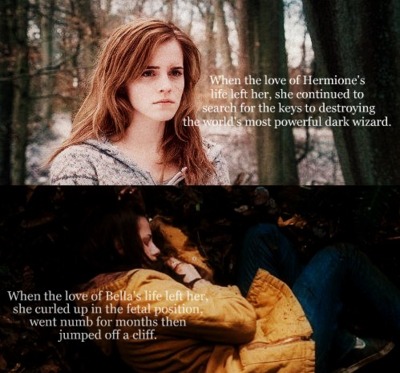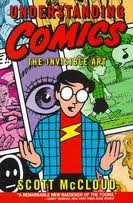Conferences give Personal Renewal
One reason I love conferences is because they are often mountain-top experiences. I’ve definitely been living in the valley this year and it was great to attend the March, 2011 Oklahoma SCBWI conference. I came away excited, ready to work.
Talking Shop. For one thing, I talked shop non-stop for 48 hours. We live in our writing caves and don’t come out except for a Tweet here and a FBUpdate there. It’s great to see and talk and hear other writers. We ate: but mostly, we talked. We listened to fantastic presentations: but mostly, we talked. We stayed up late talking. We talked at breakfast. We talked in the halls, in our rooms.
Topics of Conversation. The biggest topic of conversation, of course, was life: the joys and triumphs of our lives and how Life (with a capital L) interferes with our writing. Of course, it also enables our writing, informs our writing, gives our writing heart. Yes, Life was the main topic of conversation. Our dashed hopes, our renewed hopes. Our grieving, our rejoicing. In the end, writers, editors, agents and art directors–we are all people who walk through life telling stories. So, we told stories for 48 hours, the stories of our lives.
Our Current Work. Some attendees got critiques, so we went round and round those, chewing them up and spitting them out. Do you agree? But that critiquer just didn’t understand. Wow, can you believe s/he was so complimentary? I’m blushing, I’m hopeful, I’m scared. We rejoiced in new works: finished drafts, contracts, book covers, first reviews, upcoming awards. (Anna Myers, the OK-Regional Advisor, is slated to receive a Lifetime Achievement Award in 2012 as part of the Oklahoma Book Award ceremony! 19 books in 19 years. Wow! )
Other topics (see more about these below) were digital storytelling/ebooks, commercial v. literary, envisioning your own career, pros/cons of self-publishing, and how to make a living telling stories in today’s stressed economy.
Meet the Editors
Here is my impressions after meeting and talking with the editors. But be sure to search for more info on each of these editors; you’ll easily find pics and comments and what they like/dislike.
Nick Eliopulos, Associate Editor, Scholastic
Note: Scholastic is closed to unsolicited mss; agented mss only, or you must meet a Scholastic editor at a conference.
Nick Eliopulos (that’s io/uo) is the Peter Parker of children’s literature. Clean-cut, handsome, charming–he’s an avowed comic book fan, especially of Spider Man. As a teenager, he once drove from his northern Florida home to Atlanta to attend a comic book convention. (He told his parents it was a concert, so they didn’t think he was too nerdy. His niece says that if Spider Man is nerdy, then she wants to be nerdy.) Nick said he needed comics, borrowing courage from those super-heroes to survive the adolescent years as he realized he preferred to date guys. He still hides his vulnerability behind heavy, dark-rimmed glasses, but his humor and intelligence carries the day.

Like all the editors at the conference, he wants to see original, exciting, fresh, new work. He’ll know it when he sees it. Sigh. So simple a request, so hard to fill. Think visual and commercial, though, and you’ll go a long way toward pleasing this closet comic-book artist and fantastic editor.
Nick recommends you read this article:
Fresh Hell, by Laura Miller, New Yorker magazine, June 14, 2010.
And if you’re interested in writing comics, the required reading is Understanding Comics: The Invisible Art by Scott McCloud.
Martha Milhalick, Associate Editor, Greenwillow Books/Harpercollins
Note: Greenwillow is closed to unsolicited mss; agented mss only, or meet an editor at a conference.
Petite, energetic, opinionated–Martha Mihalick is a freckle-faced dynamo. The daughter of a self-employed grocer, she brings her father’s work ethic to publishing. One Christmas Eve, Martha recalls, a customer called her Dad to complain that her Christmas turkey had defrosted too long and was now spoiled and they had nothing for Christmas dinner. It was 10 pm on Christmas Eve, for crying out loud. It wasn’t HIS fault the incompetent cook had spoiled her bird by leaving it out too long. But her Dad said he would leave the house right then, go to the grocery store and put a turkey out beside the front door. If it was there when the woman arrived, she could have it.
Like father, like daughter. Martha is passionate about her authors, her books, and children’s literature and will work hard for what she believes in. She will try to write wrongs, even when it’s not her fault.
Next Big Trend?
One question that came up frequently in the conference is “What’s the next big trend?” Martha said that paranormal had a long run partly because it was a large enough genre, encompassing werewolves, vampires, elves, etc. There were lots of directions for stories to go. Dystopias, on the other hand, tended to be more limited. Yes, you can dystopias as science fiction, fantasy, or historical; but basically, they feel the same. Steampunk, likewise, seems more limited. (Though Scott Westerfield manages to cross genres by blending alternate history with steampunk in his Leviathan series.) Personally, she’d love to see historical novels come to the forefront again, or some variation of them. Doesn’t mean it will happen, but it’s her secret hope. (See more of her comments on Greenwillow’s blog.) Believe me, if she finds that special novel, Martha will fight to make it the best novel ever, fight to get it great publicity and fight to get it the recognition it deserves.
Follow Martha on Twitter @MarthaMihalick.
Rebecca Sherman, Literary Agent, Writers House
For submission information see her page at Publisher’s Marketplace:
http://www.publishersmarketplace.com/members/rebeccasherman/
Also search for more information, there are multiple interviews with her detailing her likes/dislikes.
Lopsided smile, belted black trench coat, and a sharp wit–Rebecca Sherman is a mother bear who passionately fights for her cubs. If you’re her client, you’ve got clout on your side. She looks first and foremost for originality: “I want something that could only come from your brain.” Nothing generic, nothing cliched!
She emphasized that finding an agent isn’t enough; you must find the right agent for your work. She warned that just because we had met her at a conference did NOT mean she was the best agent for our work. Instead, she recommends that you study an agent’s list to see what sorts of clients they prefer. (I’ll let you do that yourself; her list speaks for itself.)
Agents Look at Big Picture
I’ve been published in eight languages, but not in Macedonian! One of Rebecca’s clients, though, can claim that distinction. It’s one of the many advantages of having an agent, the aggressive sales of sub-rights. But mostly, Rebecca emphasized that an agent steps back and looks at the big picture and how her clients’ work fits into the publishing world at large and how they can continue to thrive as the digital climate of storytelling changes. Yes, the agency discusses ebooks and is actively negotiating great terms for their authors.
Personal tidbits? She loves spinning, iPads, playing Word with friends, and theatre. You can follow her to Twitter @RebeccAgent
And Rebecca? We might send out our manuscripts multiply, but to none as fair as you!
Katherine Jacobs, Associate Editor for Roaring Brook Press.
Note: Roaring Brook is closed to unsolicited mss; agented mss only, or meet an editor at a conference.
Kate was a thrill to meet, too. But I’m not saying much about her right now. She’s coming to our Arkansas conference in April so I’ll profile her then. Here’s a sneak peek.
Laurent Linn, Art Director, Simon & Schuster.
Contact: Send postcards as art samples and back them up with an online portfolio. For manuscripts that you illustrate yourself, send to editorial, he can’t acquire them.
Self-assured, opinionated and exceptionally kind–Laurent Linn returned to Oklahoma just two years after appearing there, which must mean he does a lot right. Laurent said he loves doing conferences because it puts him back in touch with the craft of illustration. So much of his time is taken up with monetary concerns of publishing that it energizes him to return to the reasons he went into this field: the art and the craft of making art.
Laurant did a unique session with illustrators. Before the conference, he sent them two manuscripts to read. Each attending illustrator chose one of the manuscripts and did character sketches, these due a month before the conference. That gave Laurent (La-wront, NOT La-rant or Law-rent) a chance to give feedback on the development of characters. Then the illustrators did a sketch of a double-page spread, followed by feedback. At the conference, they brought finished art for that double-page spread and sessions were given over to discussing their art.
Laurent was most impressed with the illustrators who took the feedback and made substantive changes. He looked for changes in character, layout, and for superb execution. Unbeknownst to the illustrators, Laurent had changed the names and titles in the manuscripts they worked from. At the conference, they finally saw the real books published by S&S and were able to compare their artistic choices with the choices of the illustrator who actually did the project. Unique opportunity!
Great Illustration = Storytelling + Emotional Connection
No, Laurent would not give Renoir a chance to illustrate a Simon & Schuster book. Why? Because Renoir did portraits, he didn’t use his art to tell a story. An illustrator must, he emphasized, add details and actions that advance the story, leave a question in the reader’s mind, hint at motivations. Storytelling and evoking emotion–they go hand-in-hand.
Laurent is watching the digital storytelling phenom and trying to stay flexible. Personally, I see the 32-page picture book as a distinct form, like a sonnet. One advantage of the digital format is freedom from this form which has been imposed by the demands and restraints of paper publishing. We may be moving into a more “free-verse” storytelling period of picture books. Still, Laurent love the 32-page format and is betting it will be around for a long time. “It’s perfect for kids in terms of length and attention-span,” he says.
Got great art? Send him a postcard!

Thanks Darcy for all the good information.
Thanks, Darcy. That’s a great summary of a wonderful weekend. I enjoyed talking to you there.
Jeannie, it WAS fun, wasn’t it?
Hope to see you again soon!
Darcy
I hated missing this conference, so I’m glad you gave us a recap. Thanks!